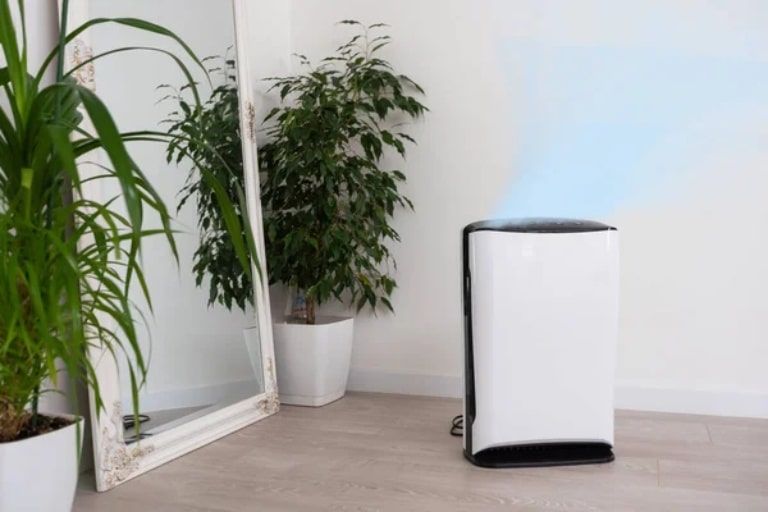Everyday Air Purity Using Cutting Edge Oxidation Filters

Maintaining good indoor air quality is an important part of a healthy living space. For those seeking advanced solutions, the Molekule range of air purifiers incorporates cutting-edge technologies designed to address everyday household pollutants through a combination of advanced filtration and oxidation. In homes, FDA-cleared air purifiers can capture particles such as dust mites, pollen, mold spores, and pet dander, while also tackling gaseous pollutants and household odors. These devices help to improve indoor air quality by reducing airborne particles and minimizing allergy or asthma triggers.
Understanding how each layer of filtration works and how oxidation processes break down harmful substances can help users make informed decisions about creating cleaner air in their living environments.
How Cutting-Edge Oxidation Filters Maintain Everyday Air Purity
Advanced air purifier technology now combines multiple stages of filtration with oxidation processes to deal with a wide range of airborne contaminants. HEPA filtration captures microscopic airborne particles, including dust, pollen, and mold spores, down to 0.3 microns.
Activated carbon layers absorb household odors, pet odors, and gaseous pollutants like hydrogen sulfide, volatile organic compounds (VOCs), and formaldehyde. Molekule PECO technology then uses light-activated reactions to break down organic contaminants at the molecular level, reducing bacteria, mold, and viruses into harmless carbon dioxide and water vapor.
When combined with features such as sensor-driven fan speed adjustments, low energy consumption, and easy replacement filters, this approach offers consistent air purity in rooms of various sizes, even when doors remain closed for several hours.
Multi-Stage Filtration: HEPA, Carbon, and PECO
A Molekule air purifier typically integrates three main filtration stages:
- HEPA filter for particulate matter such as dust mites, pollen, smoke particles, and mold spores.
- Activated carbon for absorbing household odors, pet odors, hydrogen sulfide, and VOCs.
- PECO oxidation for neutralizing organic contaminants, bacteria, and viruses.
This combination targets both particulate and gaseous pollutants for better air quality in different indoor environments.
Indoor Air Quality Factors in Everyday Homes
Indoor air quality depends on various elements, including airflow patterns, room size, and the presence of asthma triggers or allergy sources. Dust mites thrive in bedding, while pet dander accumulates on fabrics.
Smoke particles from cooking or other sources, and gaseous pollutants from cleaning products, contribute to airborne contaminants. Keeping doors closed during operation allows purifiers to process a room’s air more effectively over several hours.
Managing Common Allergens and Pollutants
Advanced oxidation filtration can address multiple allergens and pollutants:
- Allergens: pollen, mold spores, pet dander, dust.
- Pollutants: VOCs, chemicals, smoke particles, and formaldehyde.
- Microbial contaminants: bacteria, mildew, and viruses.
Regular filter replacement and monitoring of fan speeds help maintain performance in controlling airborne particles and gaseous contaminants.
Sensor-Driven Auto Mode and Energy Considerations
Modern purifiers often feature automatic mode, where built-in air quality sensors adjust fan speeds in real-time based on particle concentrations. This ensures efficiency and balanced energy consumption. For example, in low pollution levels, fan speeds reduce to save power, while higher concentrations trigger maximum airflow for faster cleaning.
Noise Levels and Everyday Usability
Noise levels can vary depending on fan speed. At low settings, some models operate at volumes comparable to an everyday conversation, making them suitable for sleep mode use. High-efficiency filtration can still be maintained with controlled airflow and minimal disruption to daily life.
Estimated Filtration Performance Over Time
| Room Size (sq ft) | Doors Closed | Fan Speed Setting | Time to Clean Air (Minutes) | Particulate Matter Reduction (%) |
| 150 | Yes | Low | 60 | 85% |
| 300 | Yes | Medium | 45 | 90% |
| 500 | Yes | High | 30 | 95% |
| 1000 | Yes | Highest | 20 | 97% |
Maintenance and Filter Replacement Cycles
To maintain air purity, replacement filters should be installed at manufacturer-recommended intervals. This applies to all the purifiers in a household setup, whether using a Molekule Air Pro, Molekule Air Mini+, or other purifiers.
HEPA and carbon filters capture particles and gases, while the PECO filter surface facilitates oxidation. Regular upkeep ensures the purifier continues to address airborne particles, household odors, and gaseous pollutants effectively.
Everyday Application in Allergy and Asthma Management
Cleaner indoor air supports individuals dealing with allergies or asthma by reducing exposure to common triggers. A well-maintained FDA-cleared air purifier can lessen symptoms related to dust, pollen, pet dander, mold spores, and other airborne particles. While this is not a substitute for medical treatment, reducing contaminants can support a healthier breathing environment.
Final Words
Air purity in everyday life depends on understanding pollutants, maintaining filters, and using features such as auto mode and controlled fan speeds. Technologies like Molekule PECO technology, activated carbon, and HEPA filtration help control odors, allergens, and airborne particles, while considering factors like noise, energy consumption, and room size ensure optimal performance.
Managing pollutants from pet dander, mold spores, dust mites, smoke particles, and volatile organic compounds leads to better air quality and supports a healthier indoor environment.
FAQs
How does PECO oxidation differ from standard HEPA filtration?
PECO oxidation breaks down organic pollutants at the molecular level using light-activated reactions, while HEPA filtration captures particulate matter physically. Together, they address both particulate and gaseous contaminants in indoor environments.
Can oxidation filters remove gaseous pollutants like formaldehyde?
Yes, when paired with activated carbon and specialized catalysts, oxidation filters can reduce gaseous pollutants, including formaldehyde, VOCs, and hydrogen sulfide, which HEPA filters alone cannot handle.
Does room size affect purifier performance?
Yes, room size directly impacts how quickly air can be processed. Larger rooms may require higher fan speeds or longer operation times to achieve significant reductions in particulate matter and gaseous pollutants.




